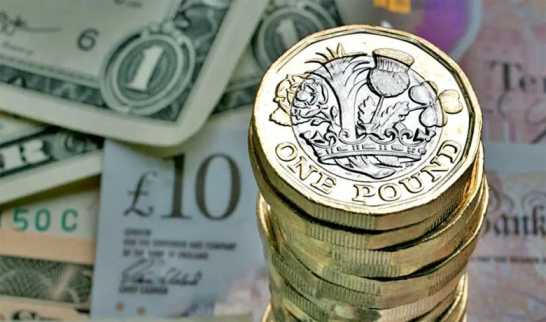UK wage growth, Sterling uptick, Unprecedented wage growth, Bank of England inflation concerns, Cooling labor market signals, Annual growth rate, Office for National Statistics data, Unemployment rate rise, Mixed labor market indicators, Chief Currency Strategist analysis, Dollar and euro exchange rates, Interest rate hike projections

Sterling Sees Uptick as UK Wages Reach Record Growth; Mixed Labor Market Signals Impact Sentiment.
The British pound saw an upswing against the US dollar on Tuesday following the release of data showcasing unprecedented wage growth in the second quarter. However, the Bank of England’s concerns about inflation were partially offset by signs of a cooling labor market.
In the three months leading up to June, wages excluding bonuses surged by 7.8% compared to the previous year. This represents the highest annual growth rate since records were first collected in 2001, as reported by the Office for National Statistics. Economists surveyed by Reuters had anticipated a 7.4% increase.
Read more-Unprecedented UK Wage Growth Spurs Sterling Uptick Amid Mixed Labor Market Signals
Despite the encouraging wage growth figures, there were indications of a slowdown in the job market. The unemployment rate unexpectedly rose to 4.2% from 4%, marking the highest level since the three months ending October 2021. This rise occurred at a faster rate than projected by the Bank of England.
Adam Cole, Chief Currency Strategist at RBC Capital Markets, described the situation as a “mixed bag,” noting that while there were signs of weaker activity, earnings growth did not seem to be negatively impacted.
The pound showed a 0.3% increase against the dollar, reaching $1.2723. Conversely, it remained relatively stable against the euro, with the euro trading at 85.97 pence.
The dollar index, which measures the currency against six major counterparts including the pound and euro, experienced a 0.2% decline.
Market analysts have now fully factored in a 25 basis point interest rate hike from the Bank of England during its September meeting. Additionally, there is roughly a 12% probability of a more substantial 50 basis point increase.
Traders have also priced in a total tightening of 75 basis points by March of the following year. This would potentially raise the bank rate to 6%, driven by concerns that elevated wage growth may further contribute to inflationary pressures.
Emma Wilks, UK economist at Lloyds Banking Group, commented on the June wage growth acceleration, emphasizing the potential for persistent price pressures due to second-round inflationary effects. She anticipates another 25 basis point hike in September.
While Bank of England Governor Andrew Bailey acknowledged the notable pay growth earlier this month, he also hinted at the possibility of pausing the series of interest rate hikes. The upcoming inflation data for July will provide the central bank with valuable insight, as consumer prices are expected to have moderated further, according to official data projected for release on Wednesday.